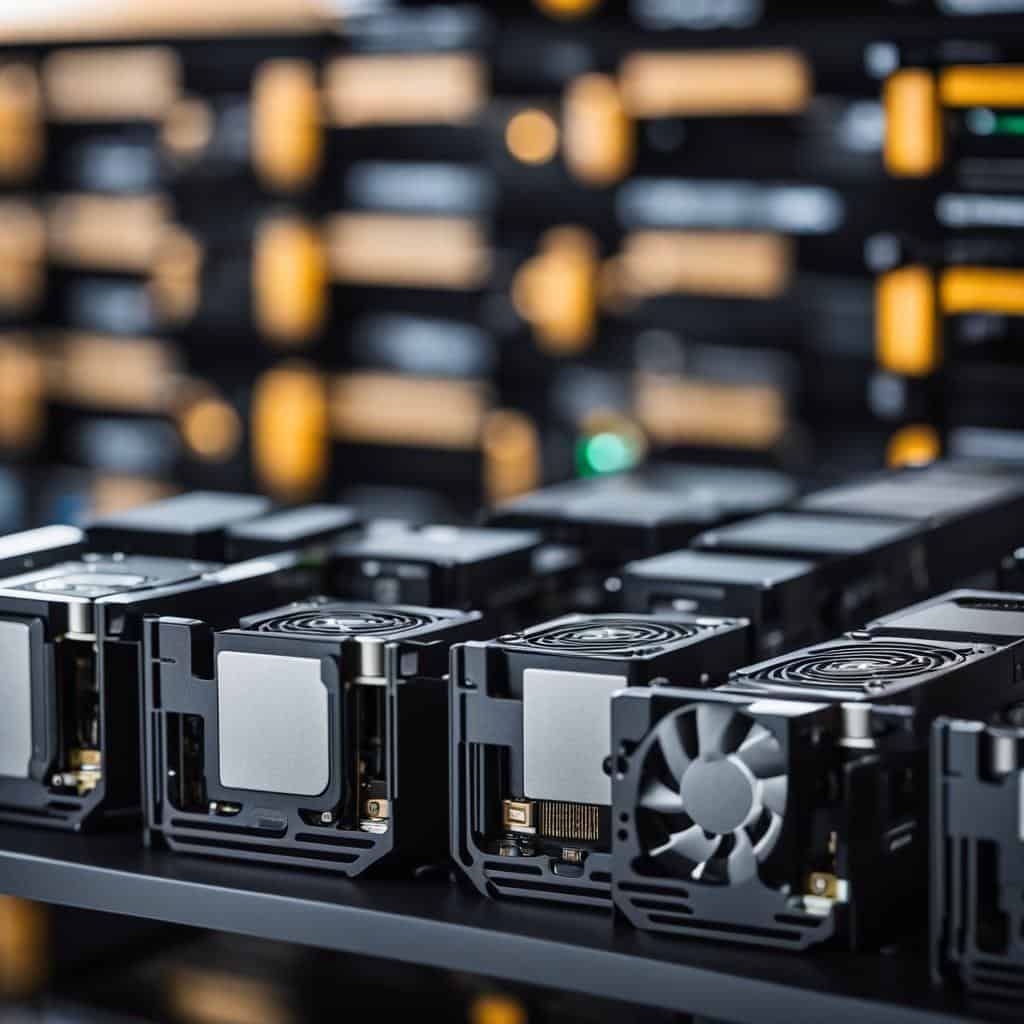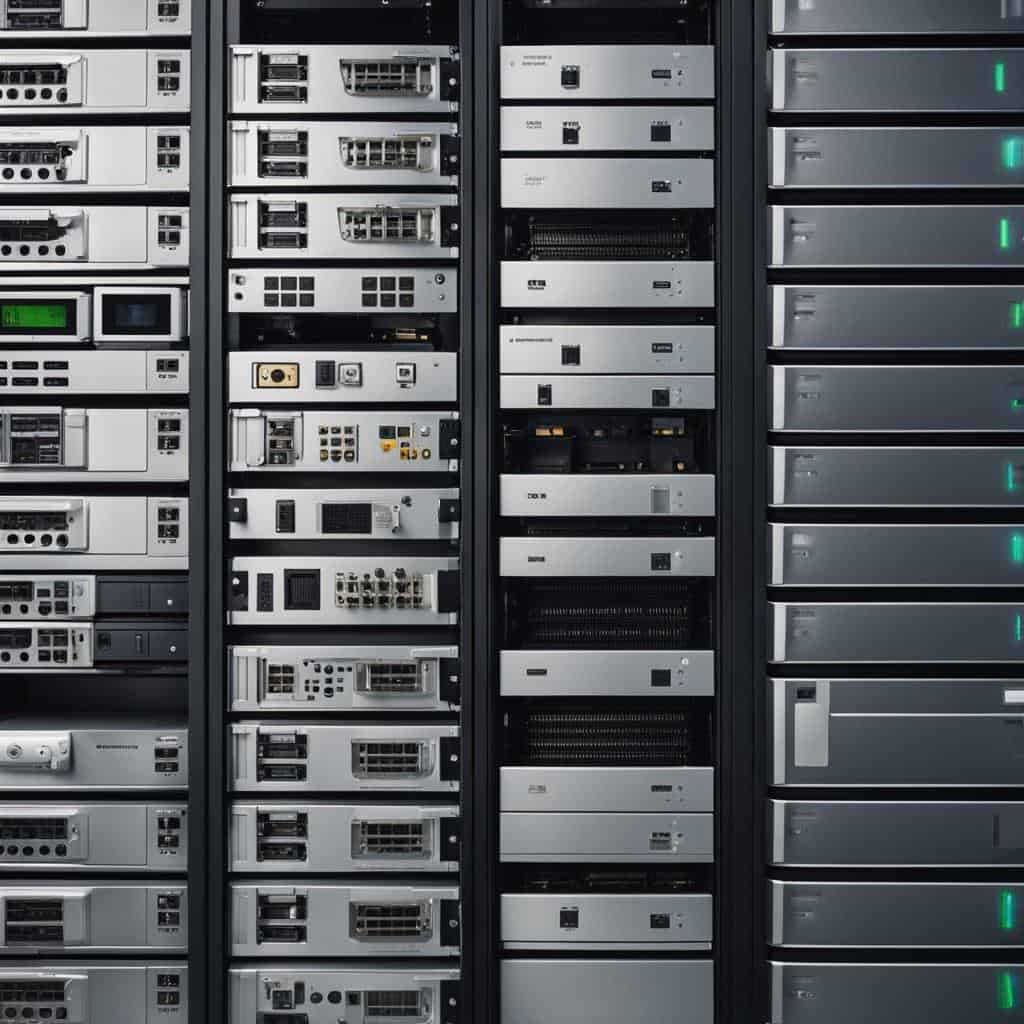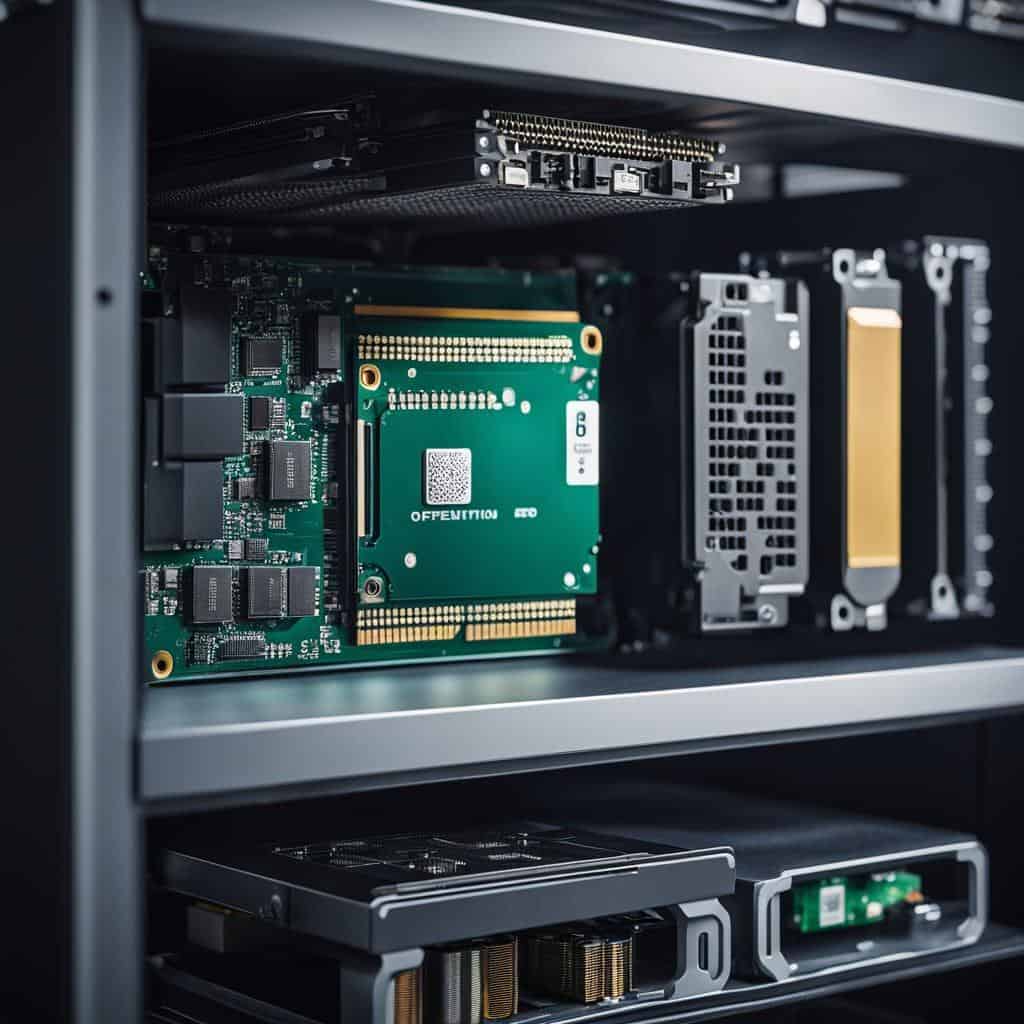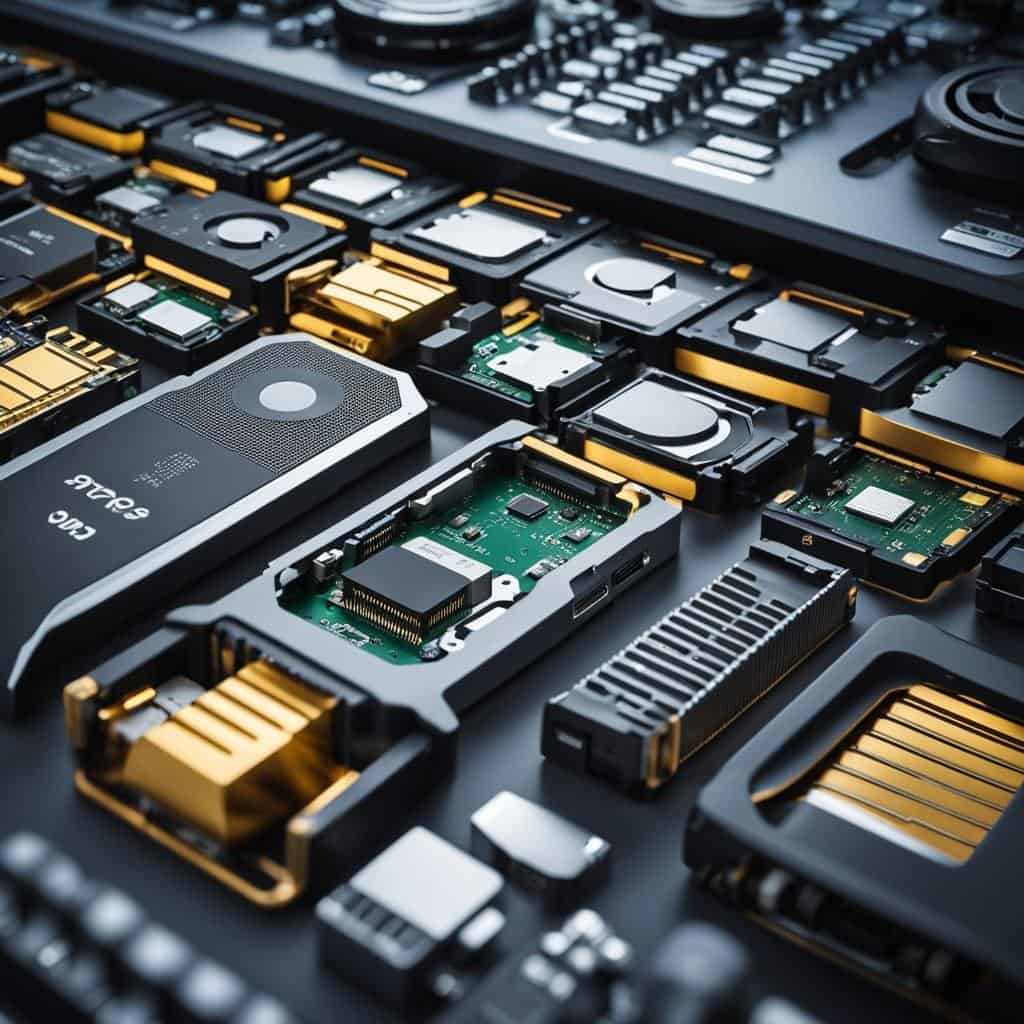TL;DR:
• Internal computer storage types include Hard Disk Drives (HDDs) and Solid State Drives (SSDs), each offering different benefits such as cost-effectiveness or speed respectively.
• Upgrading a PC’s internal storage depends on user needs, and compatibility with the system, and involves replacing the old device with a new one in the PC case.
• Internal storage devices significantly impact PC performance, affecting boot time and gaming experiences, with SSDs offering superior speed and durability.
• To maintain storage devices, regular cleaning and data backup are recommended. Troubleshooting common issues may include using the system’s repair tool, factory reset, or seeking expert help.
• Warning signs of storage failure include slow loading times, system crashes, noises, unwanted reboots, and blue screens.
Unravel the mysteries of your computer’s “thinking tank”—the internal storage. Today’s guide, “Internal Computer Storage Devices: What Are They?”, is uniquely tailored for tech-savvy enthusiasts. We’ll sail through different types of storage drives, weigh their pros and cons, and delve into the significance of choosing wisely. Perfect for anyone aiming to master modern technology or simply stay up-to-date with hardware advancements. Ready to unlock the secrets of SATA, NVMe, and SSDs? Join us and become a computer expert!
What are the different types of internal computer storage devices?
As a computer expert, I can tell you there are many types of internal storage devices. Whether you’re choosing an internal hard drive or deciding between SATA vs. NVMe, your choice depends on your unique needs.
For instance, Hard Disk Drives (HDDs) offer a large capacity at a lower cost. They’re great if budget is your main concern. But beware, they are bulkier and use more power than Solid State Drives (SSDs).
Why? Well, SSDs read and write data at speeds 3-4 times higher than HDDs. They’re also more compact and do not require cables. However, SSDs such as M.2 and eMMC have limitations. They can be more expensive and offer lower capacities.
So, remember, consider what’s important to you. The choice of an internal storage device depends on capacity needs, read/write speed, budget, and upgradability. This will ensure you select the right device for your needs.

How to Upgrade Your PC’s Internal Storage?
Before you dive into upgrading your PC storage, consider your needs. Do you need speed or space or a blend of both? Also, keep in mind especially the compatibility of the new device with your motherboard.
Let’s walk through the process of installing a new internal storage device. First, power off your entire system. Now, carefully open your PC case. Locate the old storage device and remove it gently. Next, take out your new device. Slot it into the same place your old device sat. Reconnect any cables that you detached. Close the case, power on your PC, and the system should recognize your new device. Isn’t that a DIY prowess to boast about?
Next comes the question of compatibility when upgrading storage. Simply, a drive should be compatible with your system’s connectors – like SATA or PCIe slots. Check out details about your motherboard’s specifications. Doing so ensures seamless integration of your new storage device. And, who knows? You might dive into turning an internal hard drive into an external one someday!

What is the role of internal storage devices in the performance of computers?
Internal storage can make or break your PC’s performance. A slow device can hold up boot times and hurt your gaming sessions. But how does this happen?
When you turn on your PC, it takes data from the boot drive to start up. The faster your drive can read this data, the quicker the boot time. That’s why SSDs (solid-state drives) that have fast read speeds help the system boot up in a flash. Just imagine waiting for less than a minute to start working on your PC!
And what about gaming? Well, game software requires quick data retrieval for smooth running. So, a speedier internal storage device reduces lags and stuttering graphics, leading to a more immersive gaming experience.
So, if you’re stuck between an HDD (Hard Disk Drive) and an SSD, remember this – SSDs might be pricier, but they often offer superior performance and durability, making them a worthy investment. Don’t just take my word for it – check out these benchmark results to see the difference.
How to maintain and troubleshoot internal storage devices?
Brick or blessing? That’s the question with internal storage units. Just like a car, they need upkeep. The signs of mishaps? Slow loading times, error messages, or even system crashes. But no fear, I’ll guide you through this maze.

What are typical maintenance practices for internal storage devices?
Regular cleaning is step one for a healthy storage device. Sloppy dust can clog up your device and harm its performance. And remember, always keep a backup of your data. It’s your safety net against potential storage failure.
How to troubleshoot common internal storage issues?
Got a hiccup? Your system’s built-in repair tool might be the answer. It checks for errors and fixes any if found. If that doesn’t cut it, a factory reset or expert help could do the trick.
What are some warning signs of internal storage failure?
Noise, unwanted reboots, or the blue screen of doom. These are signs of a dying storage unit. Eyes peeled for such signs! Then? Prompt action to prevent a storage-blinking out.
Conclusion
We’ve unraveled the types of internal storage, their role in performance, and practical upgrade methods. Choosing the right device is crucial by considering the pros and cons of HDDs and SSDs. Before upgrading, consider compatibility. Remember, internal storage does affect your PC’s performance, gaming, and boot time. Regular maintenance and troubleshooting are keys to long device life. Dive deeper into this topic to make an informed choice. Thank you for reading.

